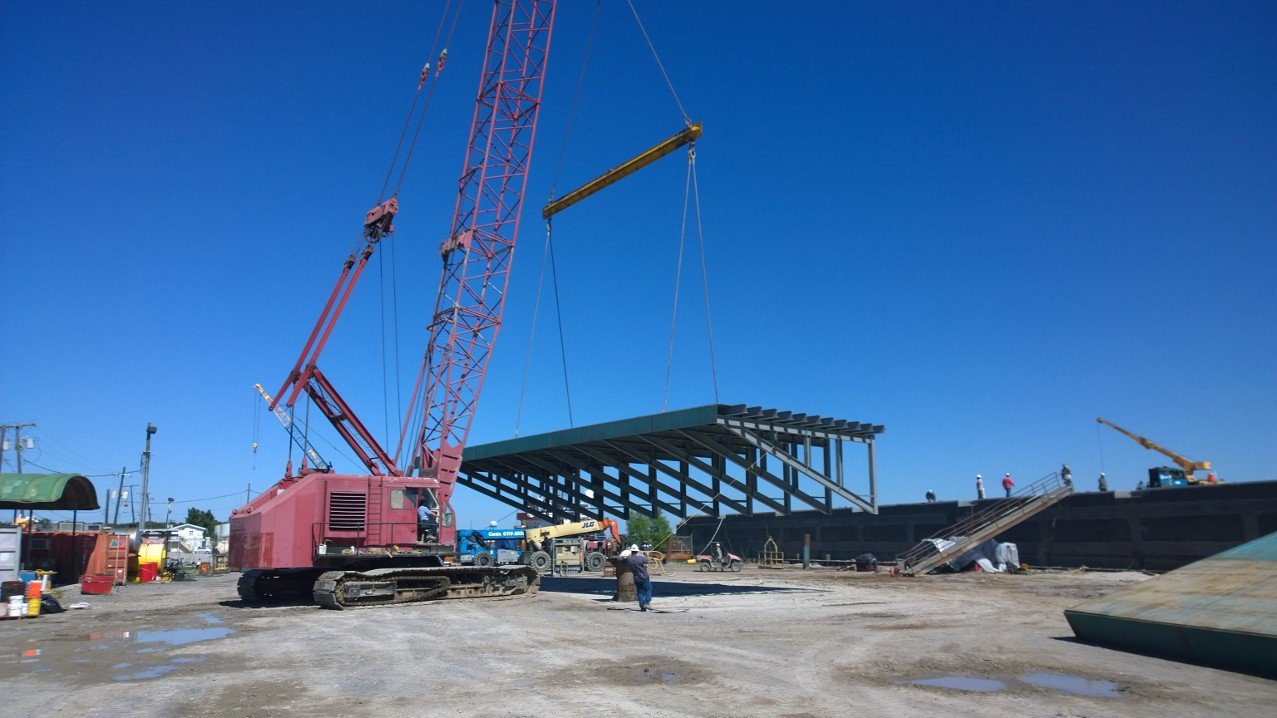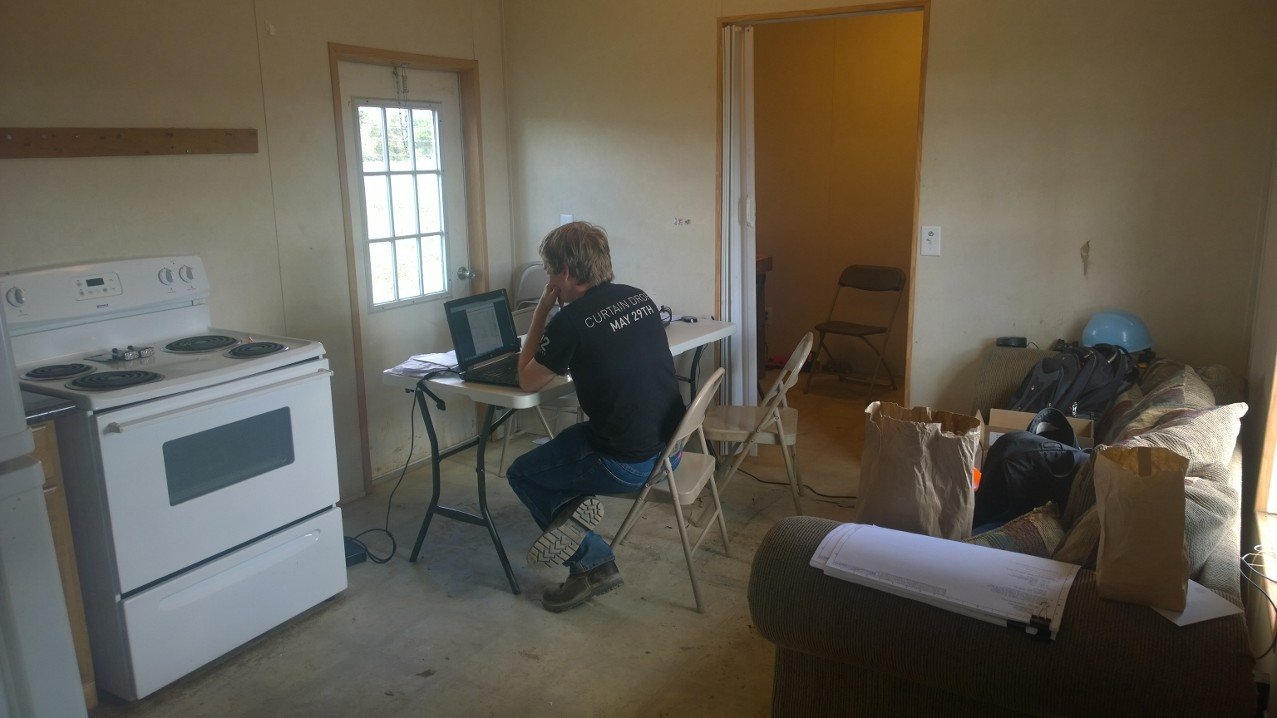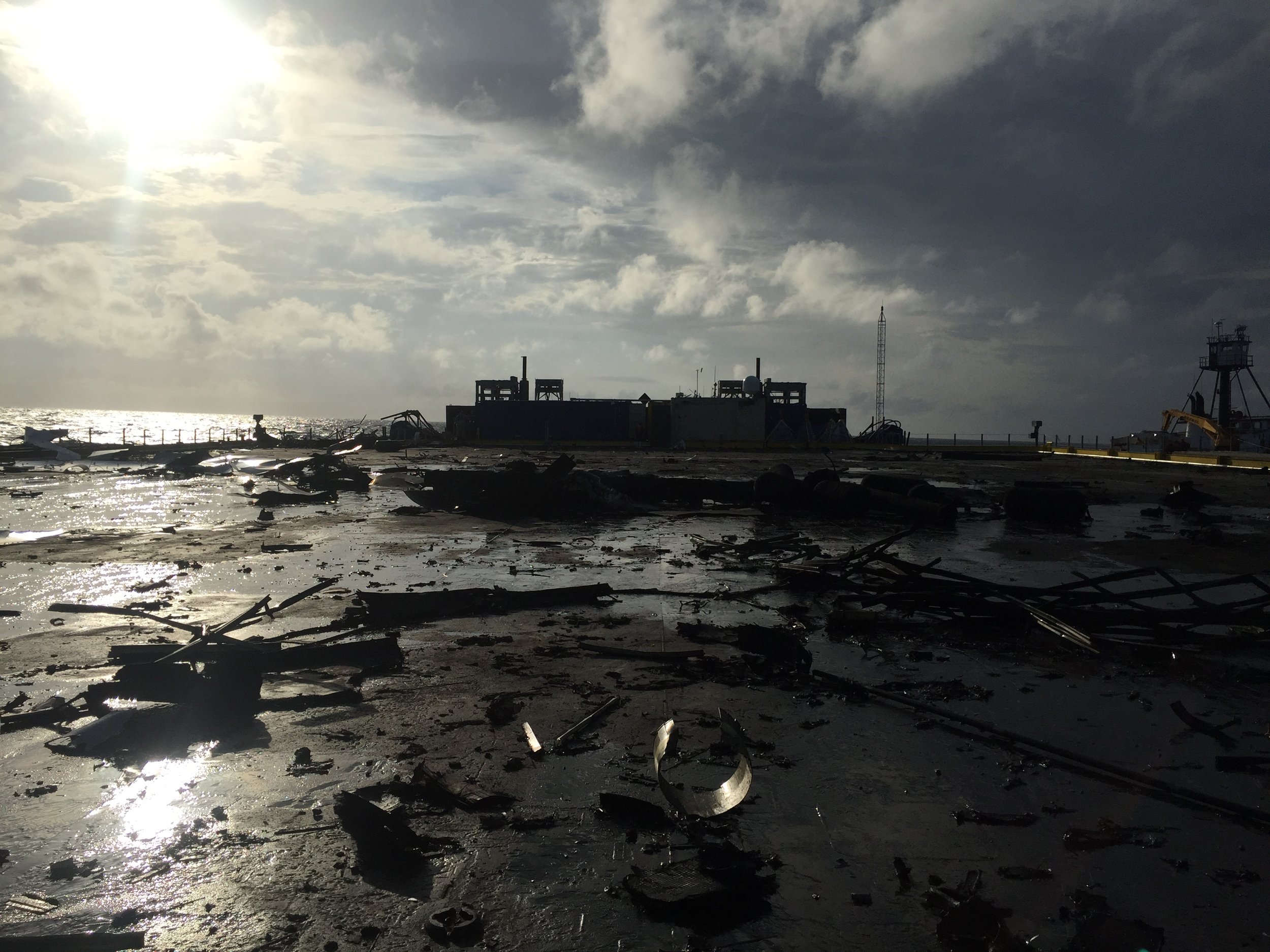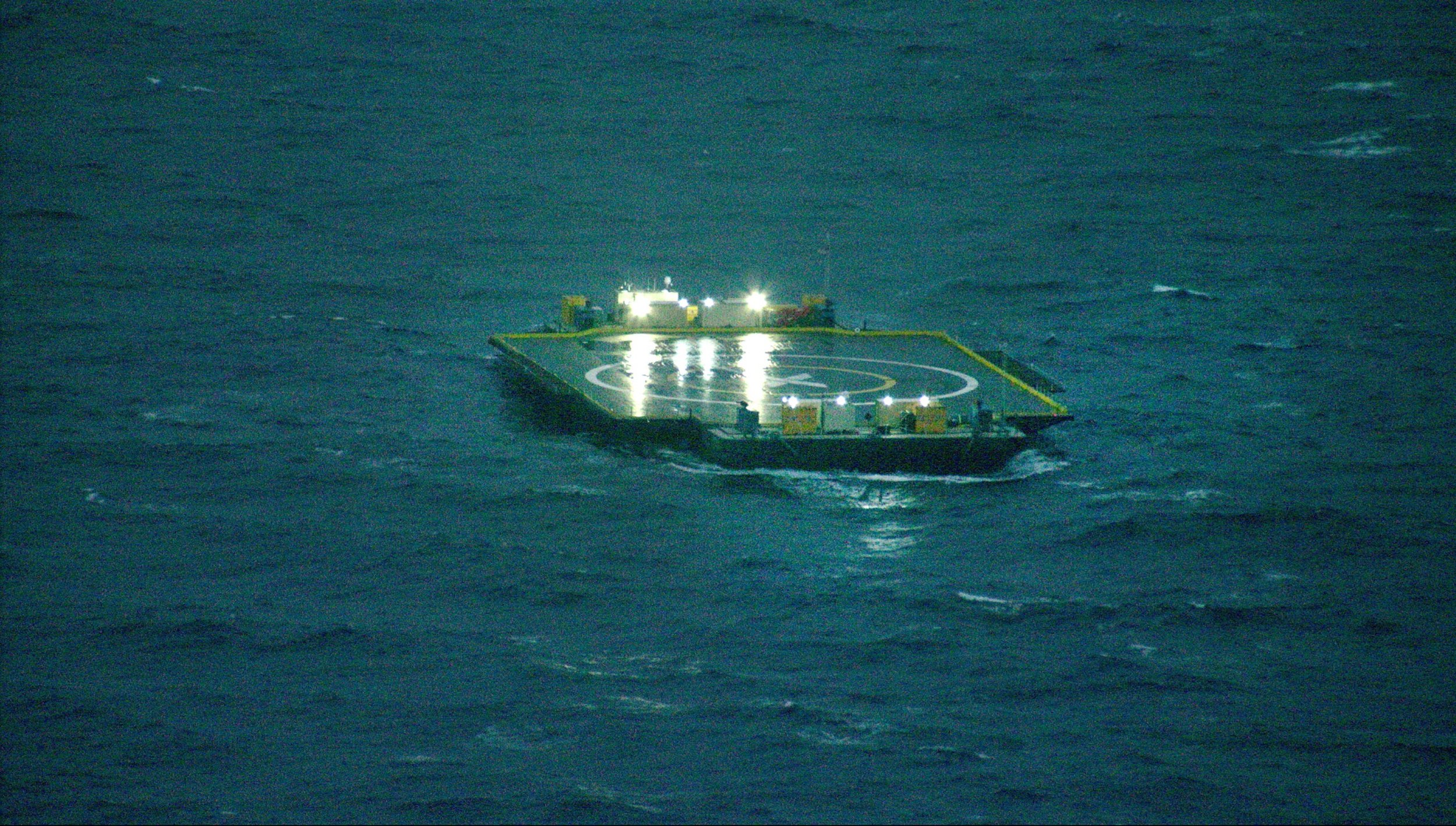SpaceX Landing Barges:
JRTI & OCISLY
TL;DR
I initially joined the SpaceX landing barge project on an 8-week contract to help “get things on track.” I had recently left SpaceX Vandy, moved to Seattle, and was looking for something to do. One year later, I woke up in a hotel room along a freeway in Jacksonville, Florida divorced, living out of a suitcase, and averaging 4 hours of sleep a night.
For the first time that morning, I saw the clearly defined walls of the existential trap I’d fallen into. A Möbius loop of ego, scarcity, and indeterminate futurism that kept me stuck, forcing me to experience the same lessons from the Universe again, and again, as It implored me to awaken.
Once I resolved to no longer to perform the same patterns for either my master’s profit or my own punishment, a door appeared between planes of existence and swung open. I stepped through.
Project Quote
“You cannot die in a soul prison. You can only be reborn”
— The Universe Simulator in Midnight Gospel, Episode 5 “The Annihilation of Joy”

Focus & Roles
I joined the SpaceX Recovery team as a contract engineer in the fall of 2014, as I figured I’d only be there for a little while and wasn’t sure I wanted to be a full-time employee again. My official title in the HR system was “contract engineer,” but my unofficial title was “Field General” during the design, build, and test phases of the project. As we transitioned into missions, my role became “Deck Boss” and I was responsible for swinging between the support boat and the barge. My favorite title, however, was the one I gave myself when the Coast Guard demanded my title reflect my day-to-day project leadership. That title was “Head Jackass.”
In general, my job was to oversee the real-time design and build of the Marmac 300, which became known as “Just Read the Instructions.” This required everything from pulling wire, to doing math on the back of a literal envelope, to making instantaneous design modifications when we’d receive major pieces of hardware (like the large wings shown in the rotating slideshow gallery below) that didn’t fit. The majority of my day was spent walking between jobs happening across the deck, making sure the technicians had exactly what they needed to make progress. If they were stopped, I had failed.
Timeline & Iterations
Initially, I was asked to come on for eight-weeks down in Morgan City, Louisiana to oversee the team while they attached the large wings and other pieces of critical equipment. However, the designs were not actually complete and so that job became much bigger than intended. I took charge of the project and began pushing to readiness, doing everything from mandating major design changes such as large journal bearings below the water’s surface to support our thrusters, to evaluating and securing our first tug boat operators.
I rode on the tugboat from Morgan City, out into the Gulf of Mexico, then down around the tip of Florida up to Jacksonville. From there, we finished out the build with support from our comrades based at the Cape launch sites only a couple hour drive away, as well as the bayou welders who loaded their equipment onto trucks and make the eastward journey down the I-10 to join us. In the run up to the first mission, we conducted sea trials and earned reticent Coast Guard approval. That first mission ended in pain, but with many useful learnings.
From there, I stayed on through multiple rebuilds due to ocean- and rocket-induced damage on mission, as well as a hull change from the Marmac 300 to the Marmac 303. This meant taking all the gear off the original barge, restoring it to pristine condition, then setting things back up on the 304. We also did the initial commissioning of “Of Course I Still Love You” on the Marmac 304, getting it ready for west coast operations and sailing through the Panama Canal.
During this time I enjoyed many random side quests, such as trying to retrieve “Just Read the Instructions” after it broke tow in a violent storm and washed ashore somewhere; going to Belgium on 24-hours’ notice to evaluate, buy, and ship new thrusters for the barges; and being dispatched to South Africa to chase down a decommissioned oil rig heading out of the Indian Ocean around the Cape of Good Hope towards a scrap yard (this last mission was cancelled after it was decided that an oil rig would be too spendy as a landing platform, alas). I was also sent to the Bahamas to get back some flight hardware that had been stolen from us, but that story is for a different medium.
Escaping the Existential Trap
Each mission was met by bad storms, mechanical failures, and rockets blowing up on the deck. Each failure caused us to redouble our efforts, explore new angles, add armor plating, and head out to sea to try again. As the first 8-weeks stretched onward to a year, we changed from the original Marmac 300 hull to the Marmac 303, and setup the Marmac 304 for transit to the west coast through the Panama Canal.
Through each cycle, I found that the work was making me just as much as I was making it, and not always in the best way possible. The work demanded all my focus, energy, and time. That meant no space for anything else. Coupled with living in a hotel, which drove a poor diet, I watched my health and fitness erode. The pressures of the job and methods of management meant my mental health went downhill as well.
I learned much about myself. I learned that there is no rock bottom to be found, there is always a lower level to discover. I learned that my ego desperately wanted to be told it mattered, and that it believed that if the work I did mattered then it might matter, too. I also learned that this is not an uncommon mindset, and that such a worldview is often created, then manipulated, in order to keep people searching like hungry ghosts for that next hit of worthiness.
But I found joy with the people I worked with along the way; everyone from the welders at the shipyard, to the boat crews, to the scrappy little team I was managing. Even more so than my time at Vandy, I learned a lot about why people stay engaged in these demanding missions on the cutting edge. It is, of course, for one another.
Many times, when I’d reached my limit, either for a given task, a given day, or even an entire mission, I persevered simply to prevent letting down my comrades. I believe deeply that there isn’t much better than great people doing hard work with, and for, one another. Through supporting these teammates, I found that there is no grand authority handing out greatness, that neither success nor failure are static states, and that if we do the work well, honestly, and with humility, it will mark how far we have come.
Finally, I learned that the Universe will absolutely keep serving us a lesson over and over until we learn it. In this way, the barge was my existential trap, or ‘soul prison,’ where I worked out every bad habit, tendency, and aspiration of my ego. They were all indulged, but eventually I discovered that always left empty at the end. We make the work, but the work makes us, too.
Horseshoes & Hand Grenades
A bunch of us were out on mission, watching the rocket come down from a couple miles away on the support boat, from roughly the same perspective as the video below. It was a hell of a thing to watch a rocket fall out of the sky, relight, and attempt to land. We’d spot it high up as it performed a burn, then track it down toward the barge. If I held my index finger out, it would perfectly blot the rocket out. It was unbelievably exciting to watch it light above the barge, driving our hopes high that it would land. This one almost did, but almost only counts in horseshoes and hand grenades; rockets force a binary outcome.

This is what most don't get to see: sweat, dirt, and smoke in a back bayou of Louisiana along the Atchafalaya.

Right before the first mission, it was decided that we needed an extra ten feet of decking on either side to make the barge wider. Management wouldn't give us more time or added budget, so we built what we could from the junk we had on hand.

They show you the glass offices and gleaming factories on Instagram. Here we have the moldy mobile home on concrete blocks, sitting at the edge of the bayou shipyard where we first built the barge. That table and a shared hotspot was our office.

The barge's first time under tow, heading through the Gulf of Mexico toward Florida. I rode along on the tugboat for the weeklong journey.

Initially we were told an "X" was a bad idea because it made the barge look like a target for crashing rockets.

Eventually, they got over it and went with the "X," as well as the name "Just Read the Instructions" based on the vessel naming convention in the Culture book series. After a few missions, the explosions necessitated so many reapplications of the name, that our painter said if it was his barge he'd replace the "X" with a smiley face and name it, "SHIT HAPPENS."

Four friends, naively thinking they were ready for the first mission. We were ready for nothing. We knew nothing, and we were never adequately prepared for what came at us. One of the four of us would lose a leg on a future mission due to poor management.

Between missions we parked at the JAX Port Cruise Terminal. As new passengers loaded into the ship, we could hear them wondering what we were doing. Once, as a team of us labored in the hot sun, I heard a dad tell his son we were the reason you should stay in school.

A soft light shines down upon on the charred remains of our barge, illuminating our mistakes and showing us that the real work lies ahead.

We learned early on that the ocean was a source of raw power that we could scarcely comprehend. A wave came over the bow and caved in the side of this shipping container.

A based member of our tugboat crew. It took a supporting cast of experienced mariners to tow the barge and run the support ship that we lived on at sea.

Like the Sirens themselves, she is alluring and intoxicating from a distance, but beware!

This photo matches the color tone and grandeur of most of my memories at sea. It seemed like we were always working in half light, building seas, and rain-soaked storms.
